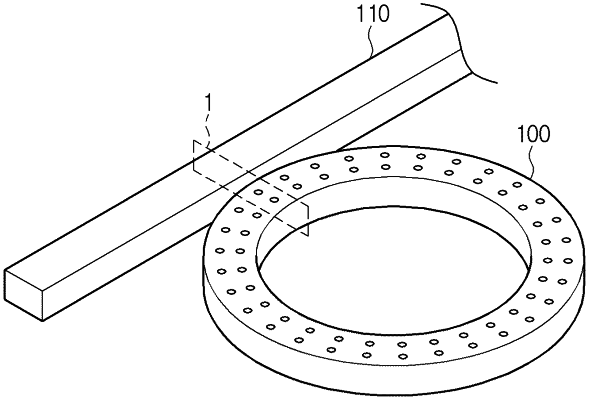| CPC G02F 1/0147 (2013.01) [G02F 1/2257 (2013.01); G02F 2203/15 (2013.01)] | 7 Claims |

|
1. A circular resonator comprising:
a first material, formed in a circular shape including a plurality of nano holes and having a thermo-optic coefficient varying at a predetermined ratio according to temperature, the first material filled in an entire area except for the plurality of nano holes in the circular shape; and
a second material having a thermo-optic coefficient varying in a direction opposite to a direction of change of the thermo-optic coefficient of the first material depending on temperature, the second material being filled in the plurality of nano holes, wherein the second material is selected from the group consisting of MgZnO, YCOB, indium tin oxide (ITO), GdCOB, and any combinations of the foregoing,
wherein an interval between the plurality of nano holes is formed at a pitch shorter than a wavelength of incident light,
wherein volume of the second material is adjusted by adjusting a size of the nano holes depending on volume of the first material,
wherein the first material is in the form of a disc,
wherein a diameter of each of the plurality of nano holes is in the range of a few nanometers of several hundred nanometers, and
wherein the second material offsets the thermo-optic coefficient of the first material so as to maintain the change in the thermo-optic coefficient to be near zero as the temperature changes thereby rendering the circular resonator resilient to temperature changes without loss of a Q factor.
|